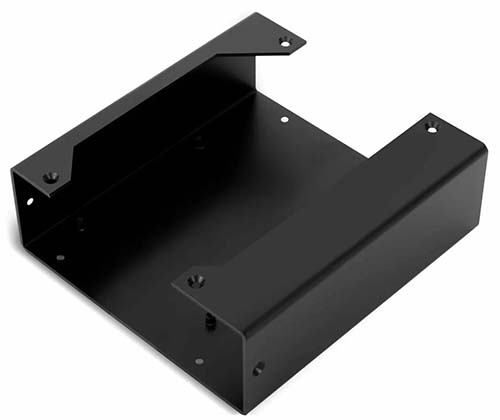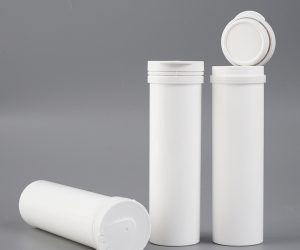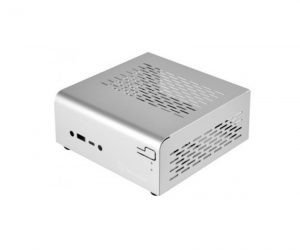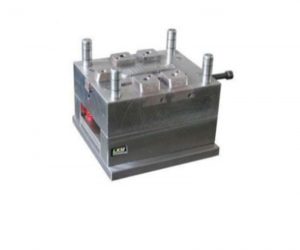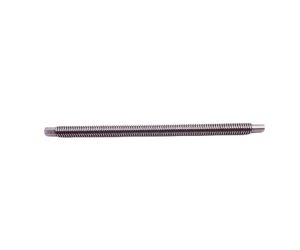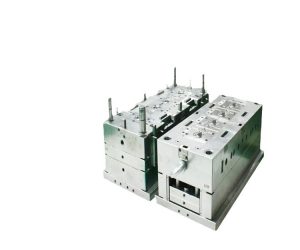What is Decorative Perforated Sheet Metal
Decorative perforated sheet metal is a versatile and visually appealing material that has gained significant popularity in various industries. It is essentially a metal sheet that has been precisely punched or drilled with an array of holes, creating a pattern that serves both decorative and functional purposes. The holes can vary in size, shape, and arrangement, allowing for endless design possibilities.
Common metals used for decorative perforated sheets include aluminum, stainless steel, copper, and brass. Aluminum is lightweight, corrosion-resistant, and cost-effective, making it a popular choice for a wide range of applications. Stainless steel offers excellent durability, strength, and resistance to rust and staining, making it suitable for both indoor and outdoor use. Copper and brass, on the other hand, have a warm, attractive appearance and are often used in applications where a more luxurious or traditional look is desired.
The manufacturing process of decorative perforated sheet metal involves several steps. First, the metal sheet is carefully selected based on the desired properties and characteristics. Then, the pattern of holes is designed using computer-aided design (CAD) software. Once the design is finalized, the metal sheet is fed into a punching or drilling machine, which precisely creates the holes according to the design. After the holes are created, the sheet may undergo additional processes such as finishing, coating, or plating to enhance its appearance and durability.
Different Types of Decorative Perforated Sheet Metal
1. Stainless Steel Perforated Sheet Metal
Stainless steel perforated sheet metal is a popular choice for many applications due to its numerous advantages. It is highly resistant to corrosion, making it suitable for both indoor and outdoor use, even in harsh environments. For example, in coastal areas where the air is salty, stainless steel decorative perforated sheets can maintain their integrity without rusting or deteriorating.
The strength of stainless steel is another notable feature. It can withstand heavy loads and impacts, ensuring long - term durability. This makes it ideal for use in high - traffic areas or structures that require structural support while also providing an aesthetic appeal. In terms of appearance, stainless steel has a sleek and modern look that can enhance the overall design of a project. It is often used in contemporary architecture for building facades, where its reflective surface can create an interesting play of light and shadow. In interior decoration, it can be found in commercial spaces such as hotels and restaurants, used for partitions, elevator interiors, or decorative panels.
2. Aluminum Perforated Sheet Metal
Aluminum perforated sheet metal offers distinct benefits, starting with its lightweight nature. This makes it easy to handle during installation, reducing labor costs and time. For instance, when installing ceiling tiles or large - scale wall panels, the light weight of aluminum allows for more efficient installation processes.
It is also highly malleable, which means it can be easily formed into various shapes and patterns. This property gives designers greater creative freedom. Aluminum is relatively cost - effective compared to some other metals, making it an attractive option for budget - conscious projects.
In terms of applications, aluminum perforated sheets are commonly used in ceiling 吊顶. Their light weight makes them suitable for suspended ceilings, and the perforations can contribute to acoustic performance by reducing noise reverberation. They are also frequently used in ventilation 口. The perforations allow for proper air circulation while adding a decorative element to the ventilation system.
3. Copper Perforated Sheet Metal
Copper perforated sheet metal is known for its unique and warm - toned color, which can add a touch of elegance and sophistication to any project. Its natural patina that develops over time gives it a vintage and classic look, making it a popular choice for 复古风格 or 高端装饰项目.
One of the lesser - known but important properties of copper is its antibacterial nature. This makes it a suitable material for applications where hygiene is crucial, such as in healthcare facilities or food - processing areas. Although copper is more expensive than aluminum and some grades of stainless steel, its aesthetic and functional properties make it a worthwhile investment for projects that require a high - end and unique look. It can be used for decorative door panels, window grilles, or as an accent in interior design projects.
How to Choose the Right Decorative Perforated Sheet Metal
1. Consider the Application
The first step in choosing decorative perforated sheet metal is to consider its application. For indoor applications, such as interior decoration in homes, offices, or retail stores, aesthetics often play a crucial role. You might opt for a metal with an attractive finish, like brushed copper for a warm and luxurious feel in a high - end restaurant's interior. The thickness can be relatively thinner, usually around 0.5 - 1.5mm, as it doesn't need to withstand heavy physical stress. The hole pattern can be more intricate and decorative, such as floral - inspired designs, to enhance the visual appeal.
In outdoor applications, durability becomes a top priority. Stainless steel is an excellent choice due to its high corrosion resistance. For example, when used in building facades, it can endure harsh weather conditions like rain, wind, and sunlight without rusting or deforming. The thickness should be in the range of 1 - 3mm to ensure structural integrity. The hole size and pattern may also need to be more practical, considering factors like wind load and water drainage. Larger holes with a simple pattern might be more suitable to prevent clogging by debris.
If it is used as equipment parts, such as in machinery guards, the focus should be on strength and safety. Steel perforated sheets with appropriate thickness and a uniform hole pattern that meets safety standards are essential. The hole size should be small enough to prevent fingers or other objects from passing through, while still allowing for proper ventilation or visibility.
2. Evaluate Material Quality
Evaluating the quality of decorative perforated sheet metal is crucial. First, always ask for material certificates. These certificates will show the composition of the metal, ensuring that it meets the required standards. For example, a stainless - steel sheet should have the correct percentage of chromium, nickel, and other elements to guarantee its corrosion - resistance properties.
Inspect the surface 平整度 and 光洁度 of the sheet. A high - quality sheet should have a smooth surface without visible scratches, dents, or blemishes. Rough surfaces not only affect the appearance but can also reduce the durability of the product. You can use a flat - edge tool to check for any unevenness.
Check the accuracy of the holes. The holes should be evenly spaced and of consistent size. Deviations in hole size or spacing can affect the overall appearance and functionality of the perforated sheet. A good - quality sheet will have holes that are within a very small tolerance range, usually within ±0.1mm for small - to medium - sized holes.
3. Budget Considerations
Budget is an important factor when choosing decorative perforated sheet metal. Generally, aluminum perforated sheets are more cost - effective, with prices ranging from \(10 - \)50 per square meter, depending on the thickness and quality. They are a great option for projects with a limited budget but still requiring a good - looking and functional solution.
Stainless - steel perforated sheets are more expensive, typically ranging from \(30 - \)150 per square meter. The price varies based on the grade of stainless steel (e.g., 304, 316) and the manufacturing process. Higher - grade stainless steel, like 316 which has better corrosion resistance, will be on the higher end of the price scale.
Copper perforated sheets are relatively costly, with prices starting from around $80 per square meter and going up significantly depending on the purity and finish. Their high price is due to the cost of copper itself and the unique aesthetic and functional properties they offer.
When considering the budget, it's important to balance cost with quality and long - term performance. Sometimes, investing a bit more in a higher - quality material can save costs in the long run by reducing maintenance and replacement needs.
Yigu Technology's Perspective
As a non - standard plastic and metal products custom supplier, Yigu Technology has rich experience in the field of decorative perforated sheet metal. We pride ourselves on our customized services. Understanding that each project has unique requirements, we work closely with clients to design and produce decorative perforated sheet metal that perfectly matches their vision. Whether it's a specific hole pattern, a particular metal type, or a customized size, we have the capabilities to meet these demands.
Our advanced production processes ensure high - quality output. We utilize state - of - the - art equipment and techniques to punch or drill holes with extreme precision. This not only guarantees the aesthetic appeal of the final product but also its functionality. Our quality control system is rigorous, ensuring that every sheet of decorative perforated metal meets the highest standards. We are committed to providing our clients with products that are not only visually stunning but also durable and long - lasting.
FAQ
1. What are the common surface treatments for decorative perforated sheet metal?
Common surface treatments for decorative perforated sheet metal include painting, which can provide a wide range of colors to match different design aesthetics and also offers some protection against corrosion. Electroplating, such as chrome plating or nickel plating, not only enhances the appearance with a shiny finish but also improves the metal's resistance to wear and rust. Anodizing is another popular option, especially for aluminum perforated sheet metal. It creates a durable oxide layer on the surface, increasing corrosion resistance and providing a decorative finish that can be dyed in various colors.
2. Can decorative perforated sheet metal be used in outdoor high - humidity environments?
Yes, some types of decorative perforated sheet metal can be used in outdoor high - humidity environments. Stainless steel, especially grades like 316, is highly suitable due to its excellent corrosion resistance. Aluminum with proper surface treatments, such as anodizing or powder coating, can also withstand high - humidity conditions well. However, for copper perforated sheet metal, although it has some natural corrosion resistance, it may develop a more prominent patina in high - humidity environments. To ensure long - term use in such conditions, applying a protective coating is recommended, which can further enhance the metal's resistance to moisture and prevent rust or corrosion.
3. How to clean and maintain decorative perforated sheet metal?
To clean decorative perforated sheet metal, first, use a soft, dry cloth to gently remove dust and loose debris. For more stubborn dirt, a mild detergent mixed with water can be used. Dampen a soft cloth with the detergent solution and wipe the sheet metal gently. Avoid using abrasive cleaners or scrubbing pads as they can scratch the surface and damage the finish. After cleaning, rinse thoroughly with clean water and dry the sheet metal with a clean, dry cloth to prevent water spots. If the sheet metal has a special finish, follow the manufacturer's specific cleaning and maintenance instructions. Regular inspections for any signs of damage or corrosion are also important to ensure its long - term performance and appearance.
